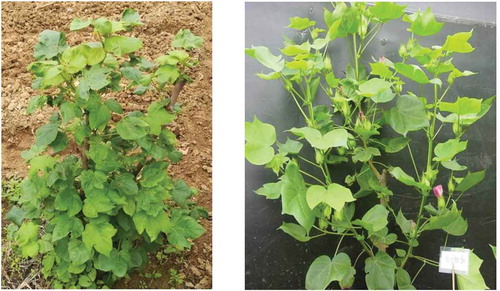Figures & data
Table 1. Benefits and problems of ratoon cotton vs sown cotton
Table 2. Perennial semi-wild landraces of cultivated cotton species
Figure 1. Three methods of growing ratoon cotton: (A) perennial cropping for the semi-wild cotton (following the bold line to the solid box), (B) perennial cropping for annual cotton cultivars left after the first year (following the solid line to the solid box), and (C) biannual cropping for annual cotton cultivars (following the solid line to the dotted box)

Figure 2. Two photos of ratoon cotton regrowing for a second lifecycle were taken in Nanning, Guangxi, China. Note that the ratoon cotton with lots of buds was cut at an approximate height of 45 cm in the left photo. Subsequently, the weaker buds were removed, leaving only about three stronger buds on each plant to grow in the right photo

